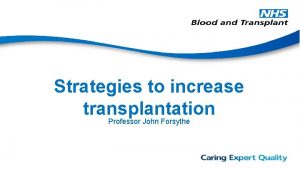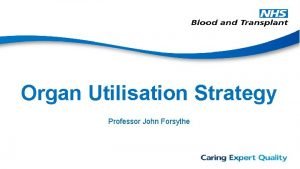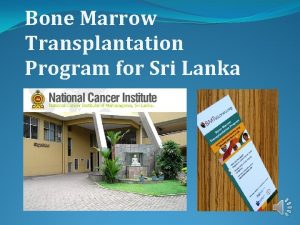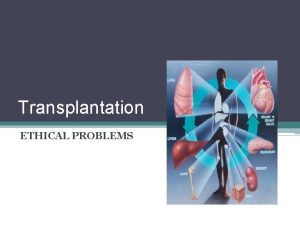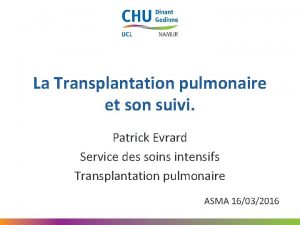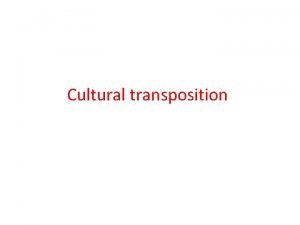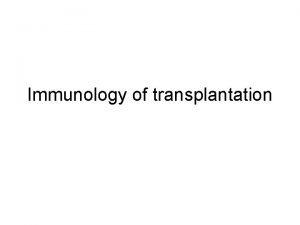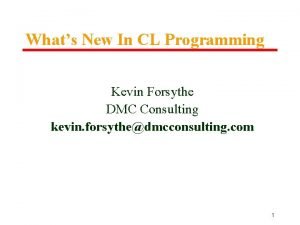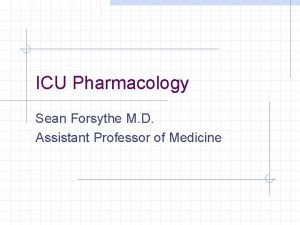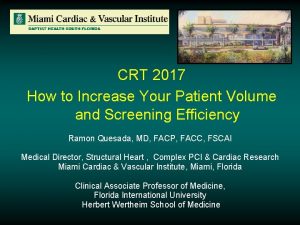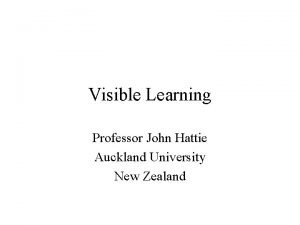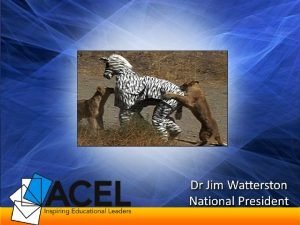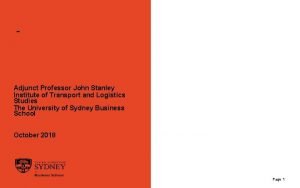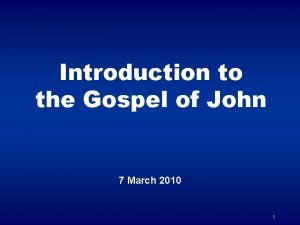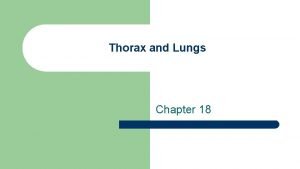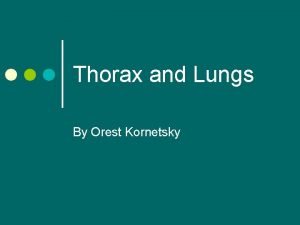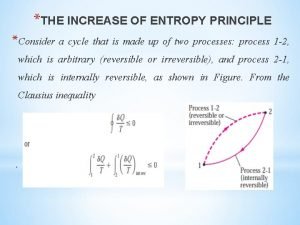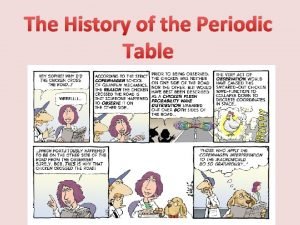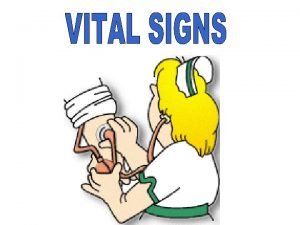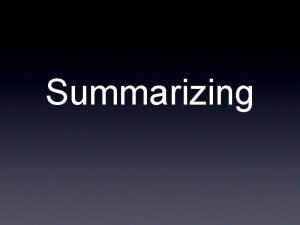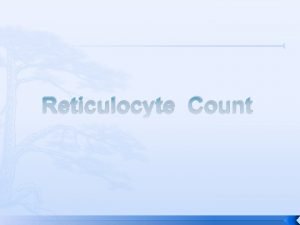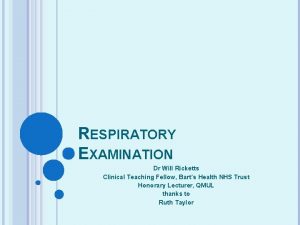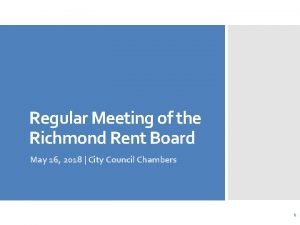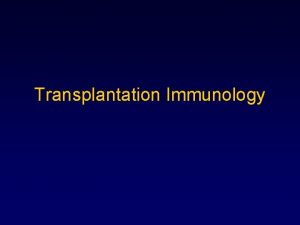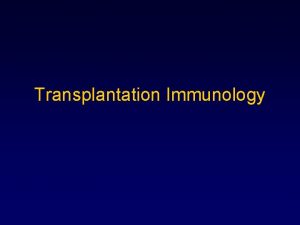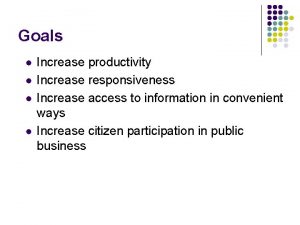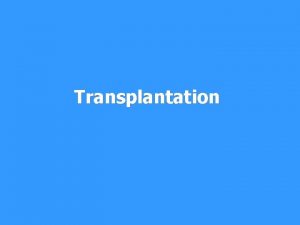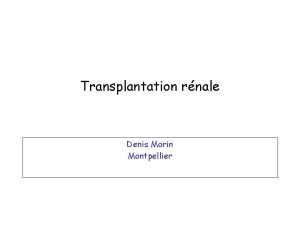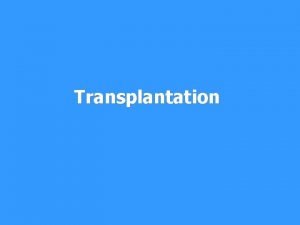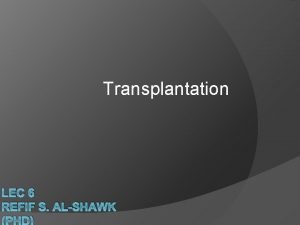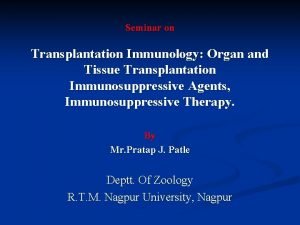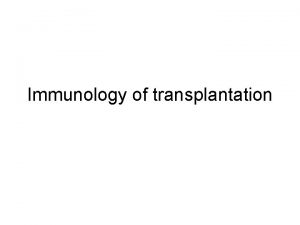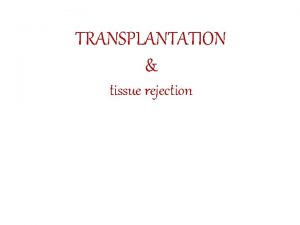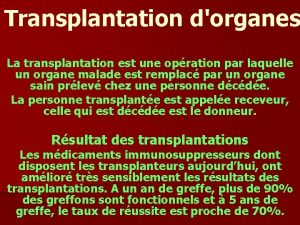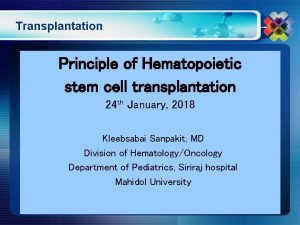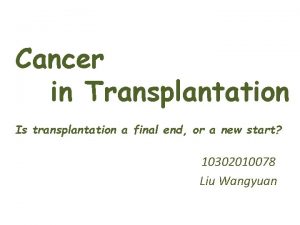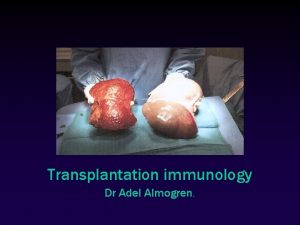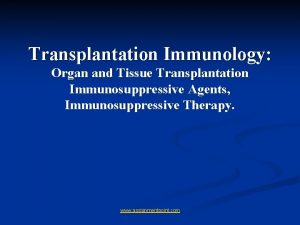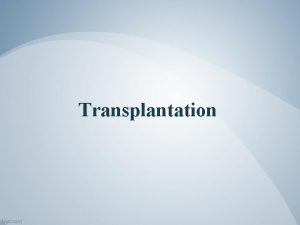Strategies to increase transplantation Professor John Forsythe Outline


































- Slides: 34

Strategies to increase transplantation Professor John Forsythe

Outline • Living donation and transplantation • Length of donation–transplantation process • Organ utilisation

Living donors in the UK Up to 40 liver donors per year

International data - living donor (LD) kidney transplant rates 2010

Adult living donor transplants Increasing complexity of living donor kidney transplantation

Adult living donor transplants Steady fall in both ABOi and HLAi adult living donor kidney transplants since 2012/13

Adult living donor transplants Rise in both paired and altruistic adult living donor kidney transplants

UK Living Kidney Sharing Schemes (UKLKSS) Include: • Paired/pooled donation (PPD) • Altruistic Donor Chains (ADC)

Non-Directed Altruistic Donation Direct to Waiting List Short AD Chain (ADC) 2007 2012 Long ADC AD 2015 AD AD D 1 R 1 WL D 1 R 1 D 2 R 2 KEP pairs WL WL

No. of transplants Altruistic donor and kidney exchange transplants Transplants according to exchange type

Types of incompatibility between registered pairs to 31 Dec 2016 Since 20 th October 2011

HLA MM and Age difference of registered compatible pairs HLA Level HLA MM N Age diff N 2 110 1 ± 20 yrs 54 3 n=7 111 4 ± 30 yrs 7 211 2 ± 40 yrs 4 220 1 ± 60 yrs 1 021 1 022 3 112 4 121 3 122 14 212 6 221 10 222 17 4 n=58 Median age of recipients: 44 (33 – 51) Min = 2, Max = 66

HLA Level 4 Minimum match grade and maximum donor age specified for recipients in compatible pairs Match grade N ***=3 1 **0=2 5 **1=2 1 **1=3 19 011 1 110 3 111 21 211 7 220 2 112 1 221 3 222 2

Outcomes for 66 registered compatible pairs 74% of compatible pairs only enter 1 matching run

Transplants enabled by compatible pairs 29 compatible pairs enabled: • 3 short altruistic donor chains • 2 long altruistic donor chains • 7* two-way exchanges • 17 three-way exchanges *One two-way exchange was between two compatible pairs 75 transplants • 10 HSP

Predicted 15 year graft survival by HLA level based on a recipient with “baseline” values HLA Level 1: 78% HLA Level 2: 75% HLA Level 3: 71% HLA Level 4: 69% 78% 11. 3 yrs 10. 1 yrs 14. 8 yrs 13. 3 yrs “Baseline” values Donor age = 46 Recipient age = 36 Transplant year = 2007 PRD = Glomerulonephritis

Types of incompatibility between registered pairs to 31 Dec 2016 by centre 11 centres registered compatible pairs

Length of donation-transplantation process

DBD donation process 10. 5 hours longer

DCD donation process 8. 5 hours longer

Offering and retrieval planning DBD DCD

Why does it matter?

Time of family approach DBD DCD

DBD retrieval operation start times Shift in time of day from 2 -5 am to 6 -12 am

DBD process Cardiothoracic organs retrieved Cardiothoracic organs not retrieved

DCD withdrawal of treatment times Shift in time of day from 10 pm-3 am to 4 -12 am

Reasons for family not giving consent/authorisation for donation 4% 17 families 2015/16 data: 405 DBD families, 829 DCD families 15% 124 families

Organ utilisation

Kidney offers, retrievals and transplants

Offers, retrievals and transplants liver kidney pancreas heart lung

Discard rates for kidneys from deceased donors, 2014 % of retrieved kidneys not transplanted No. kidneys retrieved N= 2986 14754 24% overall Source: ONT – Spain data, OPTN - US data ANZ - Australia data, NHSBT - UK data 19% overall 2432 700 % adult deceased donor kidney transplants from DCD ~ 11% in Spain ~ 15% in US ~ 37% in UK 10% overall ~ 26% in Australia ¹ 2012 data


Summary • Living donation • UK Living Kidney Sharing Schemes a big success • Organ offering taking longer • Impacting on time of day of retrieval and transplantation surgery • NHSBT initiative to streamline the process • Need to address organ utilisation • UK Strategy for Organ Utilisation

Acknowledgements Transplant unit, H&I laboratory and other hospital staff and Specialist Nurses for Organ Donation for provision of data to the UK Transplant Registry www. odt. nhs. uk RTSM, February 2017
 Professor john forsythe
Professor john forsythe Professor john forsythe
Professor john forsythe Bone marrow transplantation sri lanka
Bone marrow transplantation sri lanka Law of transplantation
Law of transplantation Patrick evrard mont godinne
Patrick evrard mont godinne Cultural transposition
Cultural transposition How does a kidney transplant work
How does a kidney transplant work Stem cell phuket
Stem cell phuket Sndusrmsg
Sndusrmsg Frank forsythe
Frank forsythe Sean forsythe
Sean forsythe Promotion from assistant to associate professor
Promotion from assistant to associate professor Increase patient volume
Increase patient volume Professor john wood
Professor john wood Sds holland food bv
Sds holland food bv Feedback hattie effect size
Feedback hattie effect size Professor john hughes
Professor john hughes John stanley temple
John stanley temple Sandwich quote example
Sandwich quote example Syllepsis examples
Syllepsis examples John outline
John outline Go tell john the blind see
Go tell john the blind see Increased tactile fremitus
Increased tactile fremitus Breath sounds location
Breath sounds location Percussion of lung fields
Percussion of lung fields Increase of entropy principle
Increase of entropy principle How does electronegativity increase in the periodic table
How does electronegativity increase in the periodic table Oral temperature range
Oral temperature range When should we teach students to summarize as they read
When should we teach students to summarize as they read Population forecasting methods
Population forecasting methods Calculation of reticulocyte count
Calculation of reticulocyte count What causes tactile fremitus
What causes tactile fremitus Repeated percentage change
Repeated percentage change City of richmond rent board
City of richmond rent board Percentage increase and decrease worksheet
Percentage increase and decrease worksheet
